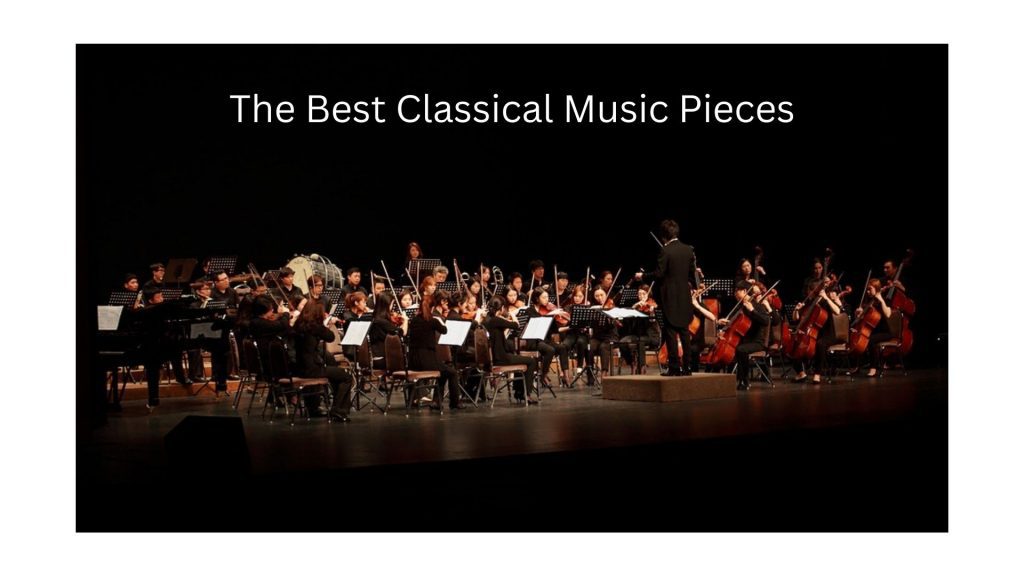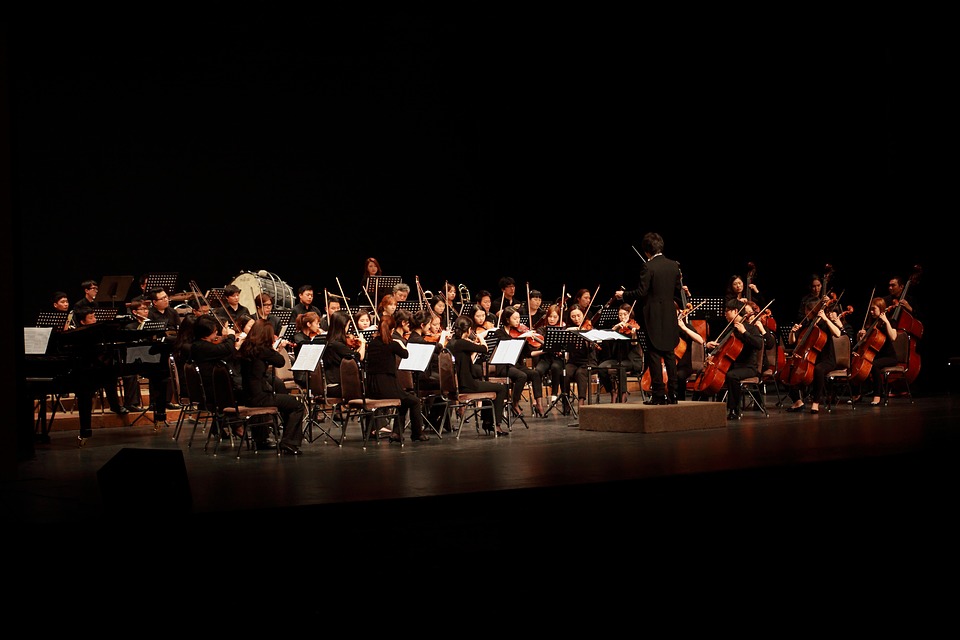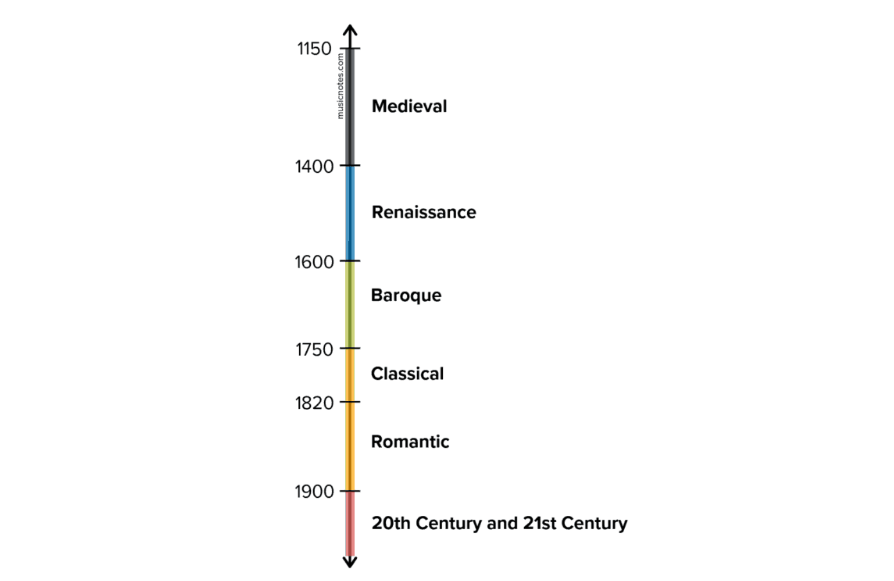Music is an influential part of our lives. Whether we listen to it while exercising, relaxing, or working, music helps us to feel better. The best classical music pieces are those that inspire us, move us, and touch our hearts. These works include Beethoven’s 9th Symphony, Mozart’s Requiem, Bach’s Brandenburg Concertos, and many others. Discover the best from the past and present. Here is a list of some of the great works of history.
- Beethoven – Moonlight Sonata (Op. 27, No. 2)
- Bach – Prelude No. 1 In C Major BWV 825
- Mozart – Piano Concerto No. 11 (K. 466)
- Beethoven – Symphony No. 5 (Ode to Joy)
- Chopin – Nocturne Op. 9 No. 2
- Bach’s Brandenburg Concertos
- Schubert – Impromptu D.852
- Haydn – Symphony No. 94 in G Major
- Brahms – Hungarian Dance No. 5
- Mozart – Piano Concerto No. 12 (K. 467)
- Tchaikovsky – Violin Concerto No. 1
- Vivaldi’s Gloria
- Rachmaninoff’s Prelude Op. 32
- Shostakovich’s String Quartet No. 2
- Schubert’s Trout Quintet
Best Classical Music Pieces of All Time
There was many great classical composers. They created the best pieces of history. These works include Beethoven’s 9th Symphony, Mozart’s Requiem, Bach’s Brandenburg Concertos, and many others. Whether we listen to it while exercising, relaxing, or working, this music helps us to feel better. So let’s discover the best-
1. Beethoven – Moonlight Sonata (Op. 27, No. 2)
Beethoven’s “Moonlight Sonata” is a famous piano sonata composed in 1801. It consists of three movements, the first being the most famous. It begins with a gentle, mournful melody played in the left hand and is repeated twice, with slight variations, before leading into a faster, more agitated section. The second movement is much quicker and lighter, with a more upbeat and playful melody. Finally, the third movement is a stormy and turbulent finale, full of rapid arpeggios and runs, showcasing Beethoven’s virtuosic piano writing. Overall, the “Moonlight Sonata” is a masterpiece of Romantic music with mournful melodies and powerful emotional impact. It has been performed and recorded by countless pianists and remains one of Beethoven’s most beloved works.
2. Bach – Prelude No. 1 In B-flat BWV 825
J.S. Bach’s Prelude No. 1 in B-flat major, BWV 825, is a famous Baroque keyboard piece from his Well-Tempered Clavier. The music begins with a simple, flowing melody in the right hand and broken chords in the left. This melody is repeated with variations before leading into a faster, more energetic section marked Allegro. The Allegro section features fast, virtuosic runs in the right hand and driving bass lines in the left hand.
The piece then returns to the opening melody with even more elaborate ornamentation. The final section returns to the energetic Allegro section, with a dramatic buildup and a final flourish of virtuosic runs and chords. Bach’s Prelude No. 1 in B-flat major is a classic example of Baroque keyboard music, with intricate melodies, ornamentation, and complex harmonies. It has been performed and recorded by countless musicians and remains a beloved piece in the classical repertoire.
3. Mozart – Piano Concerto No. 11 (K. 466)
Mozart is the most famous classical composer. Mozart’s Piano Concerto No. 11 in F major, K. 466, is a renowned piano concerto from the Classical era. The piece features a solo piano accompanied by a full orchestra. The first movement begins with a dramatic introduction, followed by a hauntingly beautiful central theme played by the piano. The training develops through various themes and variations, with virtuosic piano runs and passages interweaved with the orchestra.
The second movement is a lyrical and delicate Andante, featuring a serene melody in the solo piano with light accompaniment from the orchestra. It’s a beautiful contrast to the dramatic first movement. The third movement, Allegro Assai, is a lively and energetic finale, with the soloist engaging in a playful dialogue with the orchestra.
Mozart’s Piano Concerto No. 11 is a masterpiece of the Classical era, showcasing Mozart’s exceptional piano writing and orchestration. The piece has been performed and recorded by countless musicians and remains a beloved work in the classical repertoire.
4. Mozart – Piano Concerto No. 21 (K. 467)
Mozart’s Piano Concerto No. 21 in C major, K. 467, is a famous and beloved piano concerto from the Classical era. The piece features a solo piano accompanied by a full orchestra. The first movement is joyful and energetic, with the soloist’s virtuosic piano writing interweaved with the orchestra’s accompaniment. The second movement is a serene and melancholic Andante with a beautiful melody in the solo piano. The third movement is a lively and playful finale, with a positive dialogue between the soloist and orchestra.
Mozart’s Piano Concerto No. 21 is a masterpiece of the Classical era, showcasing his exceptional piano writing and orchestration. Numerous musicians have performed and recorded the piece, which remains one of Mozart’s most beloved works. In addition, its second movement has become an iconic piece of classical music, featured in various films and media.
5. Chopin – Nocturne Op. 9 No. 2
Chopin’s Nocturne Op. 9 No. 2 is a famous piano piece from the Romantic era. The piece features a beautiful and lyrical melody played by the right hand, accompanied by arpeggiated chords in the left hand. The work has a dreamy, melancholic quality and expressive and emotive piano writing.
Chopin’s Nocturne Op. 9 No. 2 is a masterpiece of Romantic music, showcasing his exceptional piano writing and expressive style. The piece has been performed and recorded by countless musicians and remains a beloved work in the classical repertoire. Its hauntingly beautiful melody and expressive harmonies have made it a favorite among musicians and audiences.
6. Gute Nacht, D911 (1828)
Gute Nacht, D911 is the first song in Franz Schubert’s song cycle “Winterreise” (Winter Journey) from 1828. The song is written for voice and piano and features a sad and melancholy melody with a repetitive piano accompaniment that evokes a sense of wandering through a snowy landscape. The lyrics describe a traveler’s isolation and despair after a failed love affair.
Gute Nacht is a masterpiece of Schubert’s songwriting, showcasing his exceptional ability to convey complex emotions through music and lyrics. The song has been performed and recorded by countless singers and remains one of the most iconic songs in the classical repertoire. Its haunting melody and evocative harmonies have made it a favorite among classical music enthusiasts and general audiences.
7. Schubert – Impromptu D. 935
Schubert’s Impromptu D. 935 is a solo piano piece from the Romantic era. The work consists of four movements, each with its distinct character and mood. The first movement is a beautiful and serene melody, followed by a lively and playful second movement. The third movement is a sad piece, while the final is a joyful and energetic dance.
Schubert’s Impromptu D. 935 is a masterpiece of piano music, showcasing his exceptional piano writing and expressive style. Its combination of lyrical melodies and virtuosic piano writing has made it a favorite among musicians and audiences.
8. Haydn – Symphony No. 94 in G Major
Haydn’s Symphony No. 94 in G Major, also known as the “Surprise Symphony,” is a classical orchestral piece from the late 18th century. The symphony consists of four movements, each with its distinct character and mood. The second movement is particularly famous for its sudden loud chord, which Haydn included to wake up any audience members who may have dozed off during the performance.
This piece is some of Haydn’s best orchestral music. It is a symphony that lasts about 30 minutes. Its elegance, humor, and surprises have made it a favorite among musicians and audiences. This piece is music to depict the beauty of nature.
9. Brahms – Hungarian Dance No. 5
Brahms’ Hungarian Dance No. 5 is a lively and spirited orchestral piece arranged for piano four-hands. It is based on Hungarian folk music and was composed in the late 19th century.
The piece features a catchy melody and driving rhythms, with sections of the music alternating between fast and slow tempos. Brahms masterfully weaves various Hungarian folk themes together to create a seamless and engaging composition.
The Hungarian Dance No. 5 is one of Brahms’ most famous works and has been arranged and performed in various forms, including orchestral, chamber, and solo piano versions. Its popularity has endured over time, with its lively and energetic character captivating audiences worldwide.
10. Beethoven – Symphony No. 5 (Ode to Joy)
Beethoven’s Symphony No. 5 is a monumental work in the classical music canon. Its famous opening four-note motif, da-da-da-dum, has become one of the most recognized themes in music history.
The symphony is divided into four movements, with the final movement featuring the choral setting of Friedrich Schiller’s “Ode to Joy.” The choral section, which includes soloists and a full choir, celebrates the brotherhood of humanity and the power of music to unite people from all walks of life.
Beethoven’s Symphony No. 5 is a classical music masterpiece known for its dramatic intensity, innovative use of form and harmony, and profound emotional impact. It remains one of the world’s most performed and beloved symphonies, inspiring generations of musicians and music lovers alike.
What is your choice, Classical or Modern music?
FB Page: Classical Beast



